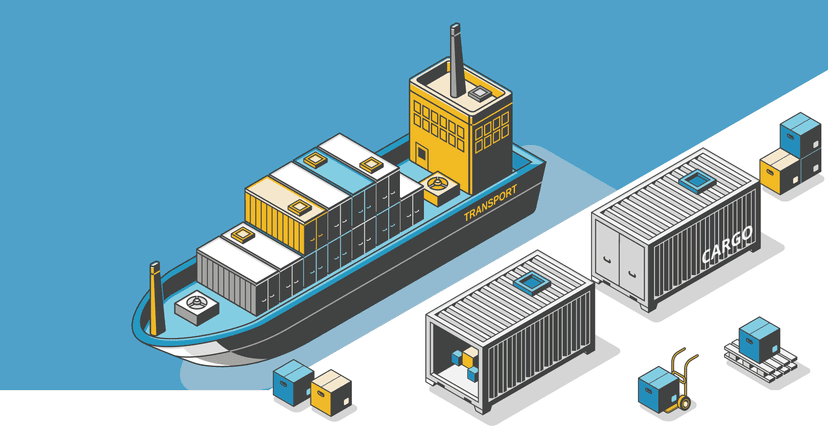
The Ultimate FCL Shipping Handbook: Costs, Benefits, and Best Practices for 2025
FCL shipping (Full Container Load) involves hiring an entire shipping container exclusively for your cargo, offering faster transit times an...
A list of key documents required for import and export by ocean freight. The article lists and explains the three must-have documents for you to import cargo by sea or export by sea.

Documents are a necessary evil in business transactions. Be it sale, purchase or shipping, a single missing or incorrectly prepared document can cause immeasurable trouble for all parties involved. In shipping, goods cannot enter or leave a country unless accompanied by the necessary documents. If the paperwork is incomplete, exporters and importers can neither hand over nor collect their cargo. They might even end up paying a penalty and, worse, suffering a setback to their credibility.
In this blog we will look at:
You may also be interested in reading our blog on shipping documents required for both import and export customs clearance.
But first, a short history of import-export documentation requirements in India and the latest government regulations on this subject.
Till five years ago, exporters and importers had to submit seven to eight mandatory documents – along with any additional paperwork that might be required, depending on the nature of the cargo or rules and regulations specific to the importing/exporting country. This made the process tedious and expensive. It was also cited as one of the factors behind India’s poor performance on the World Bank’s Ease of Doing Business Index. In 2014, India ranked a lowly 142 among 189 countries (it has since climbed to 63 among 190 countries).
The same year, the Department of Commerce set up an Inter Ministerial Committee to come up with ways to reduce the number of documents required in imports and exports. The objective was to improve the export-import process and India’s Ease of Doing Business ranking, and double exports to $900 billion by 2020. The committee suggested whittling down the number of mandatory documents to just three each for imports and exports. The recommendations were approved. In 2015, the Directorate General of Foreign Trade (DGFT) – the arm of the Ministry of Commerce and Industry that formulates and implements India’s Foreign Trade Policy – announced the changes in a notification. Under the revised Foreign Trade Policy, effective from April 2015, the following are the three key shipping documents for exports and the three key documents for imports.
The most important document in the shipping process for exporters. A bill of lading (lading is the act of putting cargo on a ship) is a legal document that must be signed by the exporter, the shipping line and the importer. For smooth transportation of goods from origin to destination, the exporter must obtain a correct and complete bill of lading from the shipping line/freight forwarder and send it to the importer. This bill includes details such as:
To know more about the bill of lading, read our detailed blogTypes And Usage Of Bill Of Lading Meaning.
A commercial invoice is a contract of sale issued by the exporter to the importer. It helps customs determine the value of the goods to assess the duties and taxes due on them. A commercial invoice carries details such as:
A packing list is an itemised list with details of the goods. It helps facilitate their examination and accurate tallying during clearance. It contains:
Before the rules were changed, the commercial invoice and packing list were separate documents with identical data fields.
A shipping bill or bill of export is a document submitted by the exporter in the form of an application to obtain clearance from customs. It informs customs of whether the exporter has availed of government incentives, such as:
Read our detailed list of benefits under India’s export promotion schemes here
If the goods are a re-export of previously imported goods, then these details must also be included.
This is the most important document not only for exporters but for importers too. The exporter must share the bill of lading with the importer, who cannot receive the goods at his end without it.
Again, the importer needs this document just as much as the exporter. This is because the commercial invoice cum packing list comes into play at the all-important time of customs clearance.
The third must-have document for importers is a bill of entry. It is a declaration by the importer on the basis of which customs authorities at the port of entry inspect and clear the goods. The information in this bill is tallied with the sales invoice or insurance policy. The information includes:
That was a quick rundown of the three documents exporters and importers absolutely need to ship their goods. That does not mean these are the only documents they require. Shipping is all about paperwork. For their goods to get the go-ahead from customs, importers and exporters might be required to submit additional supporting documents, which are dependent on various factors and vary from case to case. Read our second blog Supporting Documents In Shipping Exporters And Importers Might Need For Customs to find out about the supporting documents importers and exporters might need for customs clearance.